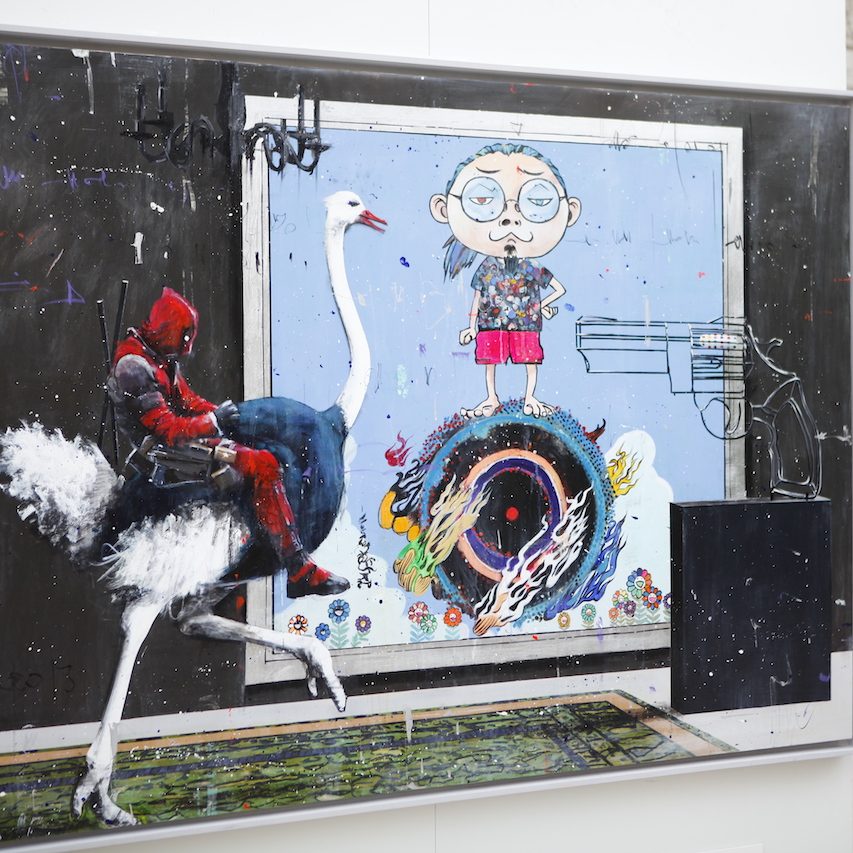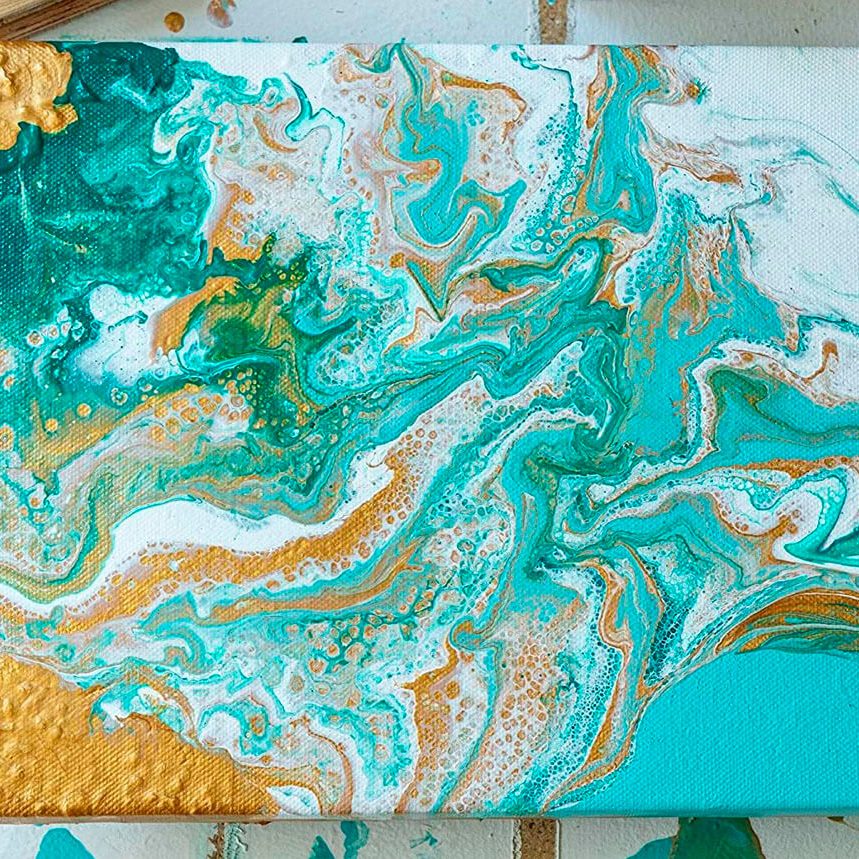Acrylic painting has emerged as a favorite medium for many artists, both professional and amateur. Known for its versatility, fast-drying properties, and vibrant colors, acrylic paint can be used on various surfaces and in diverse styles. Whether you’re looking to create expressive artworks or explore leisure painting, understanding the basics of acrylic painting will help you dive into this rewarding hobby or profession. This guide offers a comprehensive introduction to acrylic painting, covering its characteristics, techniques, tools, and tips for beginners.
Understanding Acrylic Paint
Composition of Acrylic Paint
Acrylic paint consists of pigment suspended in an acrylic polymer emulsion. This structure allows the paint to dry quickly, forming a flexible and water-resistant layer once cured. The acrylic medium is non-toxic and can be diluted with water for specific effects, making it a safe choice for artists of all ages. The wide range of colors available ensures that artists can achieve vibrant hues and subtle shades, allowing for a comprehensive palette to work from.
Advantages of Using Acrylic Paint
One of the standout features of acrylic paint is its versatility. Artists can use it to mimic the qualities of oil and watercolor paints. It can look smooth and glossy, like oils, or be watered down for a more fluid, transparent look, similar to watercolor. Plus, its fast drying time allows artists to layer colors quickly without waiting for the previous layers to dry, which is essential for techniques like glazing and impasto. Understanding these advantages can inspire beginners to experiment with different styles and techniques.

Essential Supplies for Acrylic Painting
Choosing the Right Paint
When starting with acrylic painting, selecting the right paint is crucial. Acrylic paint comes in two primary qualities: artist-grade and student-grade. Artist-grade paints contain a higher pigment concentration and offer a richer color payoff. In contrast, student-grade paints are more affordable and suitable for beginners. Investing in a few colors of artist-grade paint can enhance your initial experience, encouraging you to explore more with vibrant hues without compromising quality.
Brushes and Tools
Selecting the right brushes can elevate your painting experience. Acrylic brushes are often made with synthetic fibers, which help hold and distribute acrylic paint effectively. Flat brushes, round brushes, and filbert brushes are all useful for different techniques. Don’t hesitate to experiment with palette knives or sponges to create varied textures. Additionally, a sturdy palette for mixing colors, a water container for cleaning brushes, and a variety of surfaces, including canvas, wood, or paper, will enhance your acrylic painting setup.
Techniques for Acrylic Painting
Basic Techniques to Explore
Acrylic painting offers countless techniques for artists to explore. Wet-on-wet painting involves applying fresh paint onto a wet layer, which creates softer edges and blends smoothly. In contrast, wet-on-dry painting occurs when applying wet paint atop dried paint, allowing for sharper lines and bold contrasts. Other techniques include layering, where multiple transparent or opaque layers are built up to create depth, and glazing, which involves applying thin transparent layers for a luminous effect.
Texture and Effects
Texture plays a significant role in acrylic painting. You can create texture using thick applications of paint applied with palette knives or using texture gels. Combining different mediums, such as sand or modeling paste, can also add unique depth and character to your work. Experimenting with texture gives your artwork a tactile quality, making it visually engaging and enhancing the overall experience of viewing the piece. Great texture can transform an ordinary painting into something exceptional.

Preparing Your Workspace
Setting Up for Success
Creating a comfortable and organized workspace is key to inspiring creativity. Choose a well-lit area with enough space to spread out your materials. A dedicated easel can help you work at a comfortable height and angle. Cover your work surface with a protective layer, such as plastic or old newspapers, to catch any accidental spills and make cleanup easier. A clutter-free environment can enhance productivity and allow you to focus solely on your painting.
Establishing a Routine
Getting into the habit of painting regularly can improve your skills over time. Set aside specific times during the week dedicated to acrylic painting, treating it like an appointment for your artistic growth. Sticking to a routine helps develop discipline and ensures you make consistent progress. Whether you can spare an hour or an entire afternoon, prioritize your time and approach each painting session with enthusiasm and intention.
Color Theory and Mixing
Understanding Color Relationships
A solid grasp of color theory can enhance your acrylic painting practice significantly. Familiarize yourself with the color wheel and understand the relationships between primary, secondary, and tertiary colors. Knowing how to create complementary and analogous color schemes can elevate your compositions and evoke various emotions. For instance, using complementary colors creates striking contrasts, while analogous colors tend to harmonize beautifully.
Mixing Paint Effectively
Mixing colors is an essential skill in acrylic painting. Start with the primary colors: red, blue, and yellow, and learn to blend them to create secondary colors like green, orange, and purple. Don’t forget to experiment with tints (adding white), shades (adding black), and tones (adding gray) to create a variety of hues. You can even mix different brands of acrylic paint to achieve desired effects, but it’s wise to test small amounts first. Developing confidence in color mixing will empower your creativity and enhance your palette.

Overcoming Challenges
Dealing with Mistakes
Mistakes are a natural part of the artistic process, especially when you’re starting. The beauty of acrylics is that they can be easily painted over once dried. If you’re unhappy with a particular section, don’t be afraid to repaint it. Embrace the idea that each error can lead to a newfound technique or unexpected style. Building resilience in your approach to mistakes allows for growth and discovery in your artistic journey.
Understanding Drying Times
One crucial aspect of working with acrylics is knowing about their drying time. While the fast-drying nature allows for quicker layering, it can also require you to work efficiently. If you’re struggling with blending, consider using a slow-drying medium to extend the working time. Alternatively, keep a spray bottle filled with water nearby; a quick mist can help reactivate the paint and make blending easier. Adapting to these aspects will ultimately enhance your skills and the quality of your work.
Continuing Your Acrylic Painting Journey
Finding Inspiration
Inspiration can come from various sources: nature, art history, everyday experiences, or even emotions. Surround yourself with inspirational materials—posters, books, and internet resources showcasing other artists’ acrylic paintings can spark your creativity. Participating in art challenges on social media platforms or joining painting groups can provide a sense of community, making your journey rewarding and enjoyable.
Taking Classes and Workshops
Consider enrolling in local or online acrylic painting classes for more structured guidance. Many artists find mentorship invaluable in their growth, and workshops can present new techniques and ideas. Engaging in a learning environment allows you to interact with fellow artists, receive constructive criticism, and broaden your artistic horizons. Investing in your education can lead to breakthroughs in your capabilities and a deeper appreciation for acrylic painting.
Conclusion
Acrylic painting offers a diverse and engaging way to express creativity, making it an ideal medium for beginners and experienced artists alike. Understanding the fundamental aspects of acrylic paint, the necessary supplies, and various techniques paves the way for enjoyable painting experiences. Embrace the journey of learning and exploration, allowing your creativity to expand through practice and experimentation. With time, patience, and a willingness to learn, you can unlock the endless possibilities that acrylic painting offers. Dive in, and let your artistic spirit flourish!